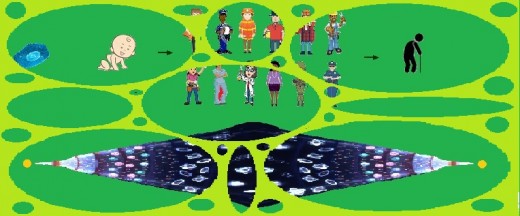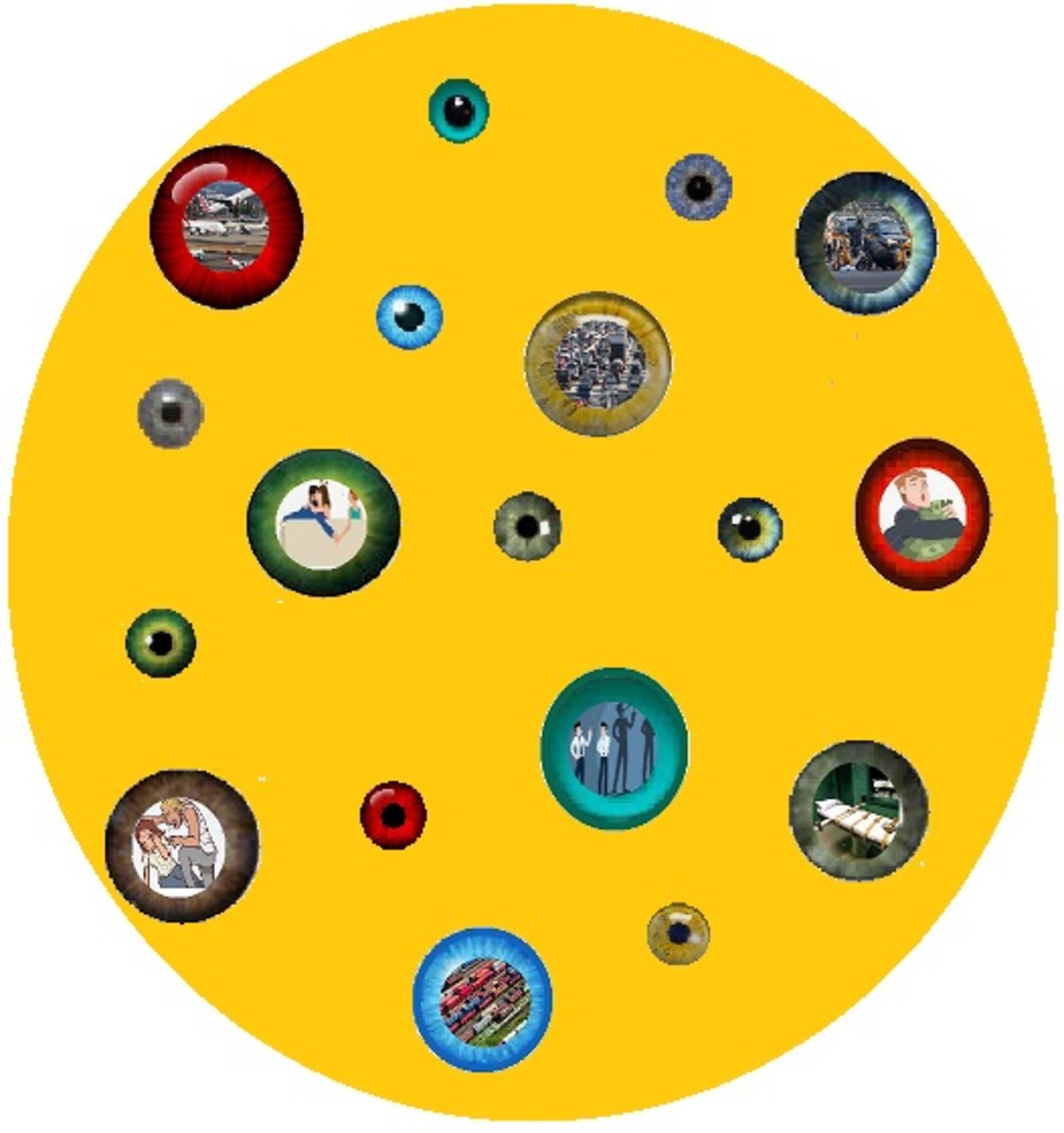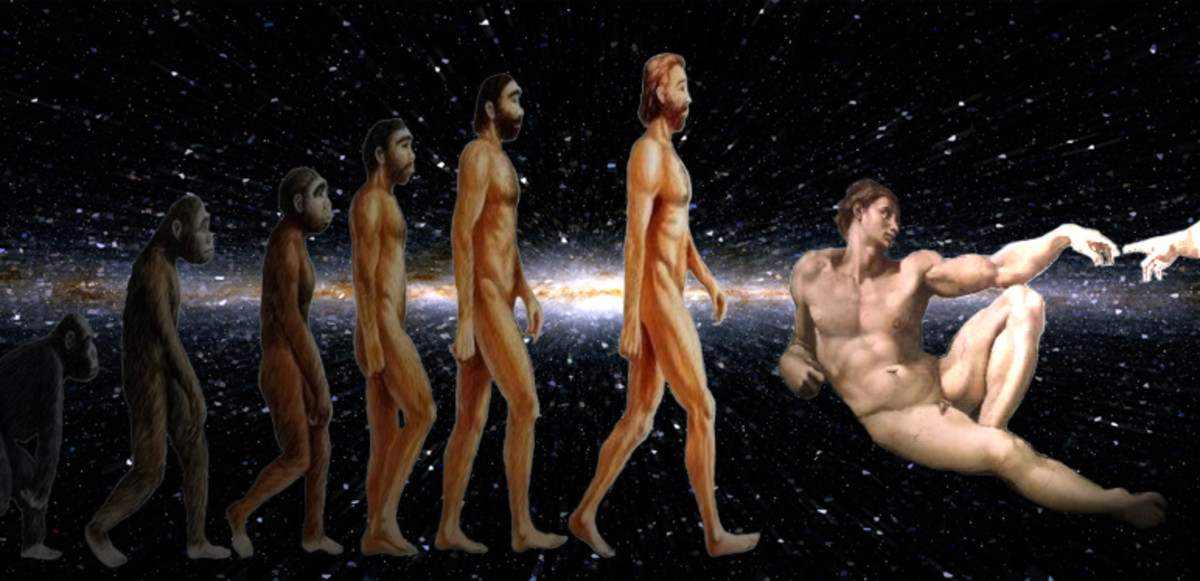Meaning of Time
When we are happy, we want to slow the time to enjoy the moment longer. When we are in pain, we want the time to go faster to shorten the suffering moment. When a person is 10 years old that means one should be in school to learn about the basic skills to live in the man-made world. When a person is 30 years old that means one has a stable job and is raising a family. When one is 60 years old that means one will no longer be surprised by anything that happens. Our man-made world is run on a schedule based on time:
-
Normal daily working hours are from 8am to 5pm,
-
Every business transaction has to be completed on a set time frame,
-
The public has to check the schedule to use the transportation system – bus, train, and airplane,
-
To see a doctor, we have to make an appointment,
-
To watch our favorite TV programs, we have to know their show times.
Time provides meaning and purpose to our life in the man-made world.
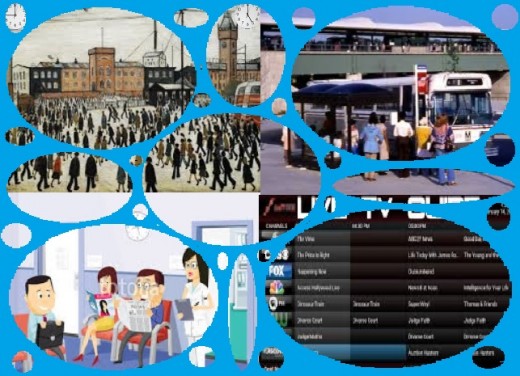
Measurement
Our time measurement started with Earth orbiting around the Sun while rotating on its own axis. We set the one complete orbit as a year and one complete rotation as a day. There are 365 days in a year. We divide the day into 24 hours, the hour into 60 minutes and the minute into 60 seconds. We built mechanical then electrical devices to calculate and display the passage of time. Later, we discovered the radioactive decaying property of certain atoms like carbon 14 and uranium, and came up with the radiometric dating technique. With the dating tools, we were able to estimate with reasonable accuracy not only the time when our planet Earth was created but also the times of occurrence of the major events that had taken place since then. Relying on the knowledge of these timelines, we no longer have to depend on faith, belief, or guesswork to understand where we came from, where we are going, and the meaning and purpose of life in the natural world.

Timelines
Earth is estimated to be 4.5 billion years old. In the beginning, there was no life, no living things. Based on the timelines, life on Earth has gone through the following major stages:
-
From organic chemical to single cell – 4.5 to 3.8 billion years ago,
-
From single cell to fish – 3.8 to 0.53 billion years ago,
-
From fish to amphibian – 530 to 340 million years ago,
-
From amphibian to reptile – 340 to 310 million years ago
-
From reptile to mammal – 310 to 200 million years ago,
-
From mammal to human– 200 to 6 million years ago.
As it can be seen, some stages took longer than the other and there was no pattern as to how things developed along the path. But, we are able to determine that the seemingly complex, random, and timeless evolution of life on earth are the results of two factors:
-
Changes in the DNA – Everything on Earth may look and behave differently, but they are all built according to the genes embedded in the DNA. The single cell bacteria has around 1500 genes in its DNA, the fish has around 24,000 genes, the chicken has 20,000 genes, while the human has 22,000 genes. The DNA structure is very simple based on a unique sequence of only 4 nucleotides pairs – A,G,C,T. During reproduction, this sequence will not always be duplicated exactly. Every now and then, a totally unique and functioning DNA sequence was produced resulting in a new living species.
-
Changes in the environment – Earth has an ideal environment for life to germinate, flourish, and multiple. In regions with moderate climate like those close to the equator. A vast diversity of living things can be found in comparison to colder or hotter regions. But, extreme environmental changes like the Ice Age, volcano eruption that spilled toxic fumes over the continents, landscape altering earthquake, category 5 hurricane, or gigantic sized asteroid can change the pace, outlook, and the scale of the development of life. For example, the collision of a 2-mile wide asteroid terminated the 30 million years domination by the dinosaur and ushered the age of the small mammal.
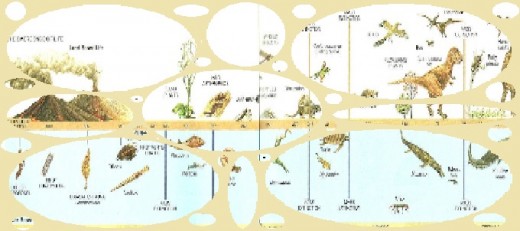
Beginning and Ending
The changes in the DNA and environment are random and unpredictable. But the development of life on Earth will reach its pre-defined destination in just a matter of time. The timelines show that it had taken 3 billion years for the building blocks of life to come together to set the stage for the germination of the single living cell. From the single cell to human took only 1 billion years. We, the human, are probably in the final stage of this natural life development. We are the only living thing on Earth who is able not only to understand how the whole process works but also to know how to change the DNA, predict and minimize the impacts of the changing environment. It is just a matter of time that we will colonize the moon, the Mars, and even planets in the Universe. When that time comes, the life development on Earth that started 4.5 billion years ago, would have run its course and complete its goal. A person’s life started at birth and stopped at death. Our Sun will burn itself out in approximately 5 billion years and our solar system will then cease to exist. Our Universe’s time started at the Big Bang at around 1.3 billion years ago and had been expanding ever since. We do not yet know how the Universe is going to end. But, Time has shown that there is a beginning and ending; nothing lives or exists for ever.
